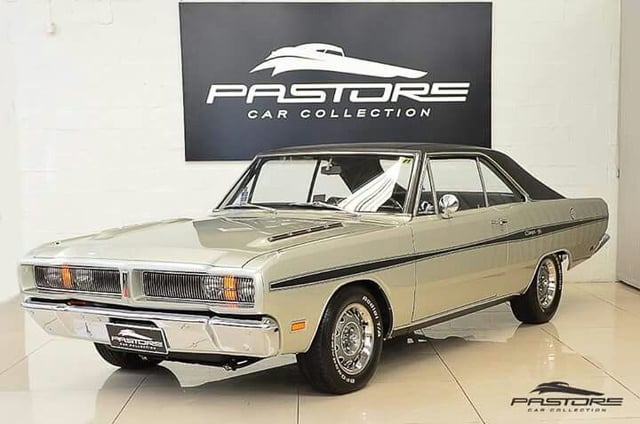
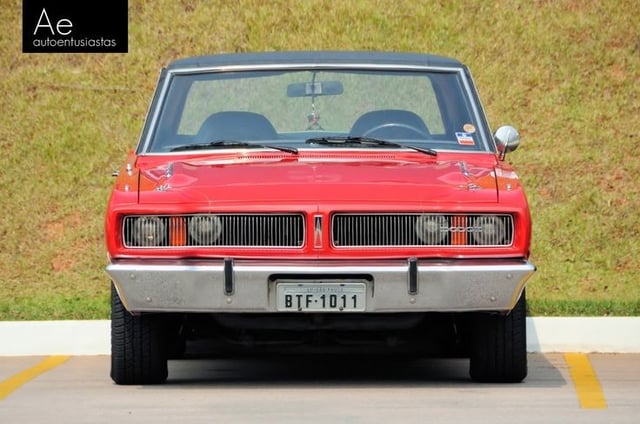
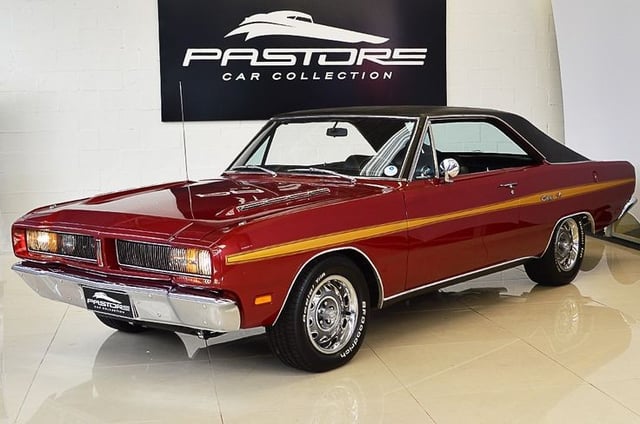
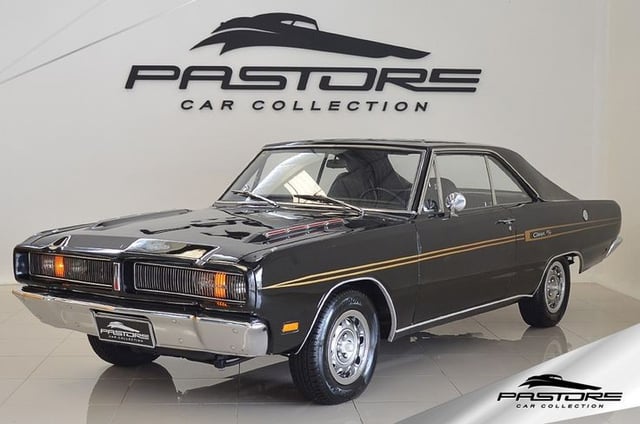
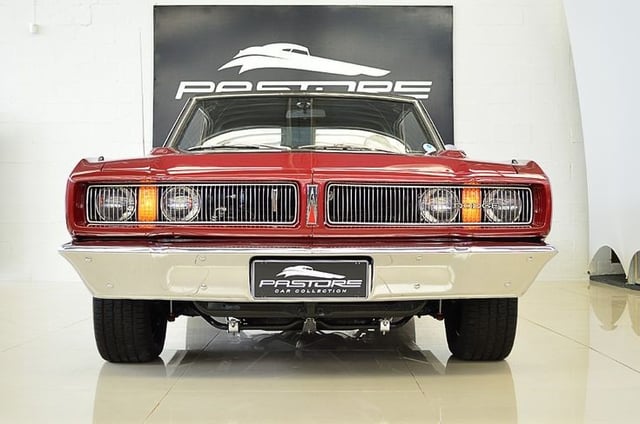
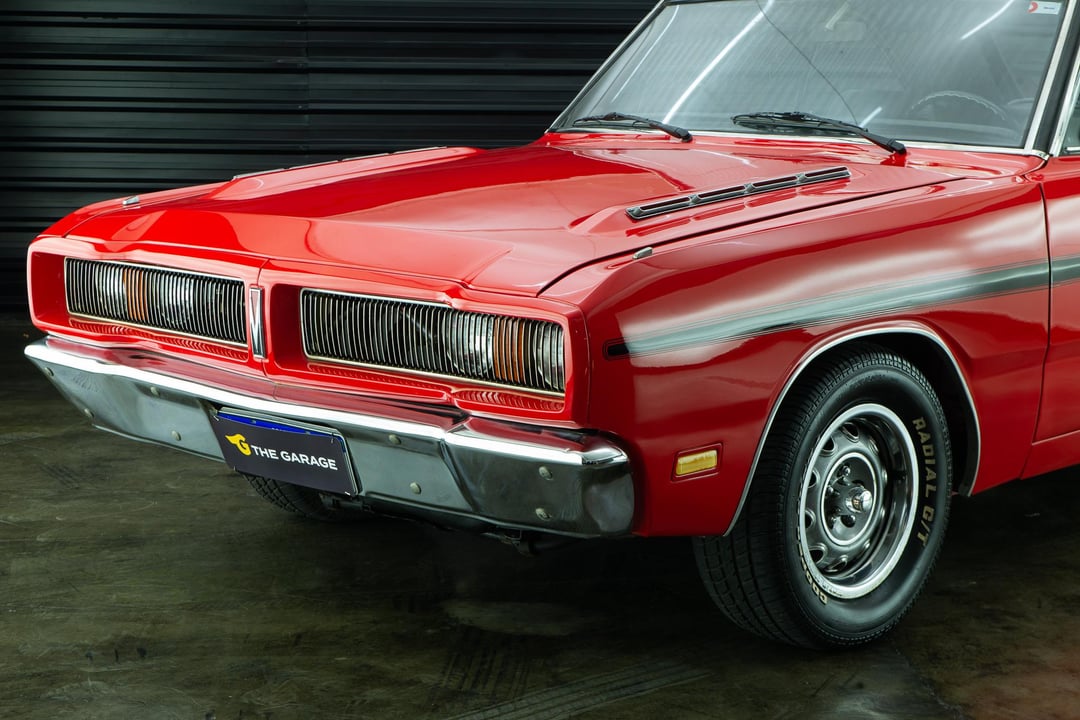
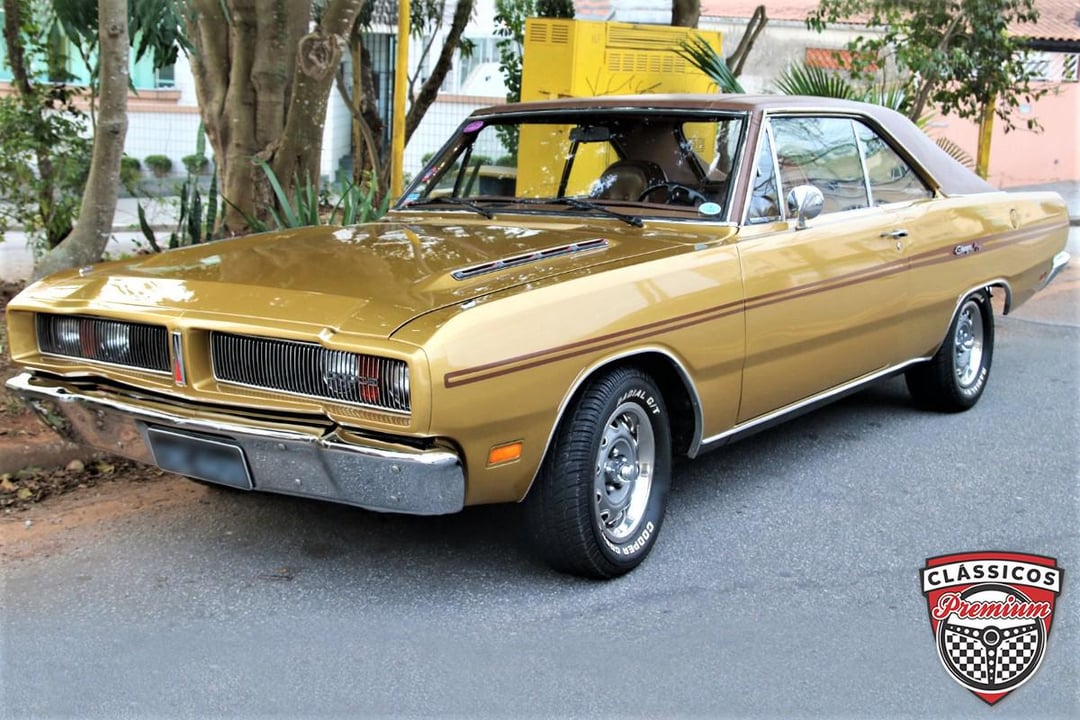
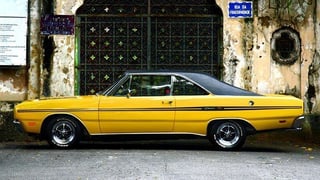
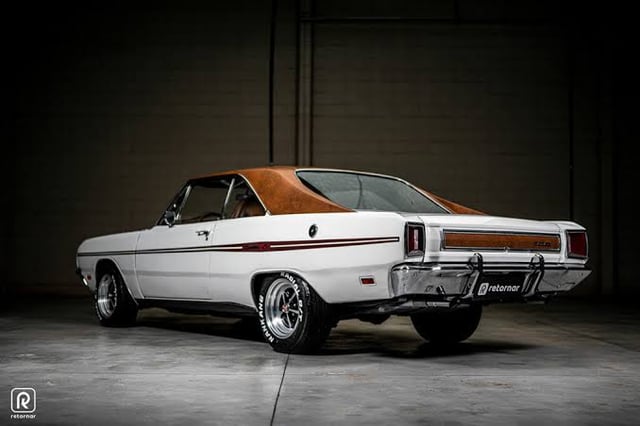
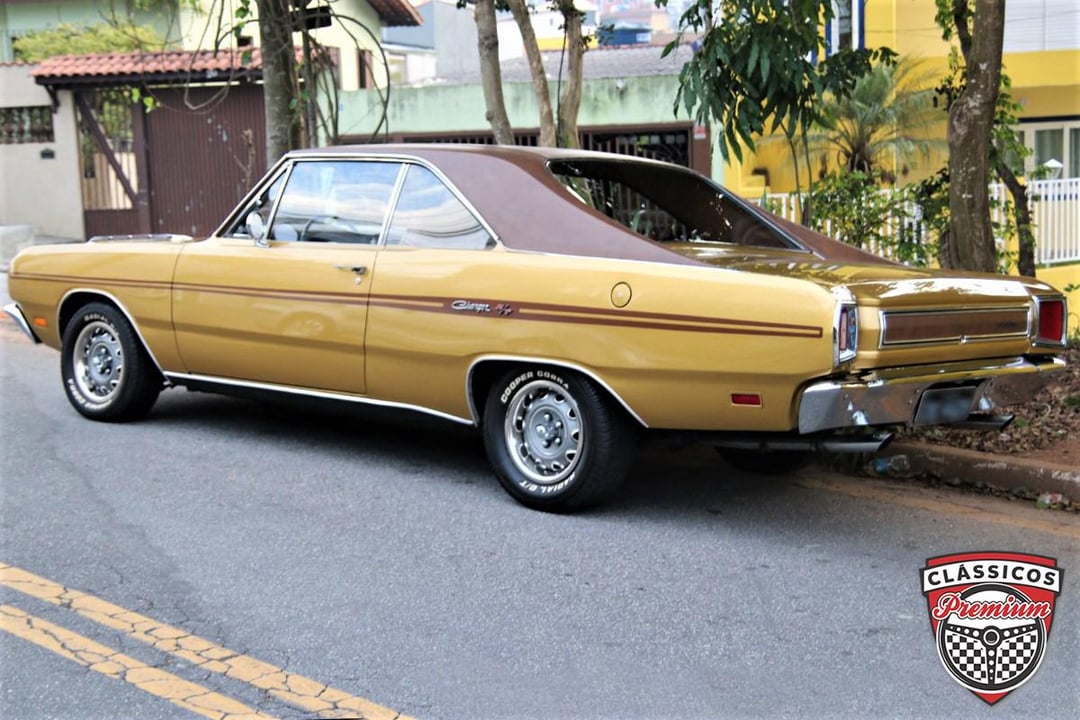
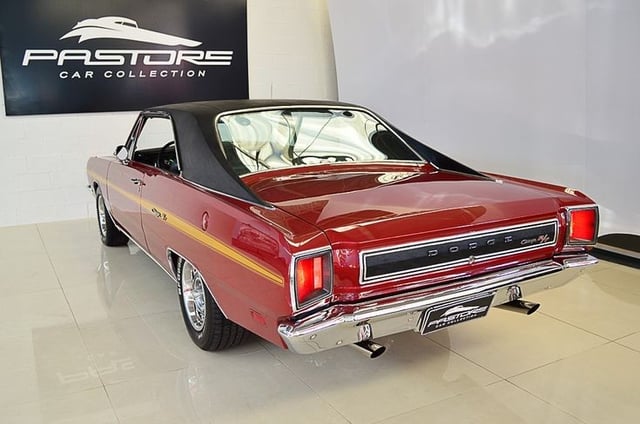
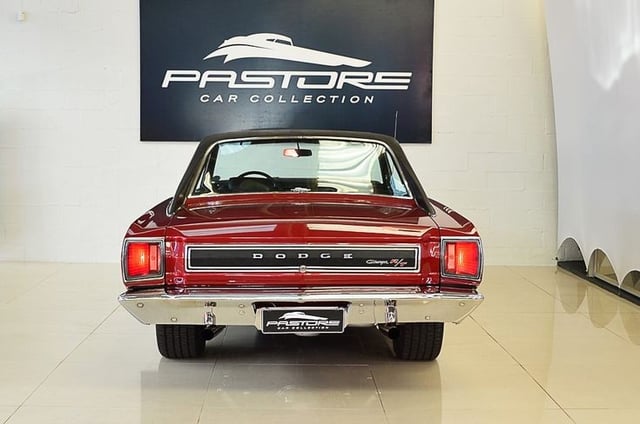
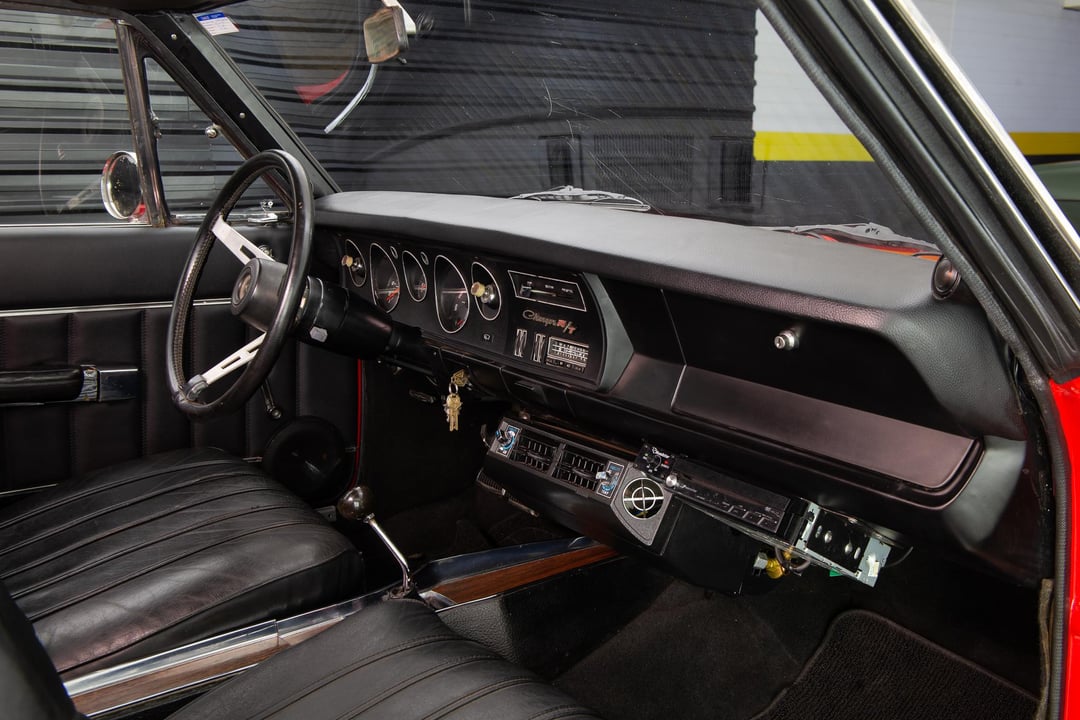
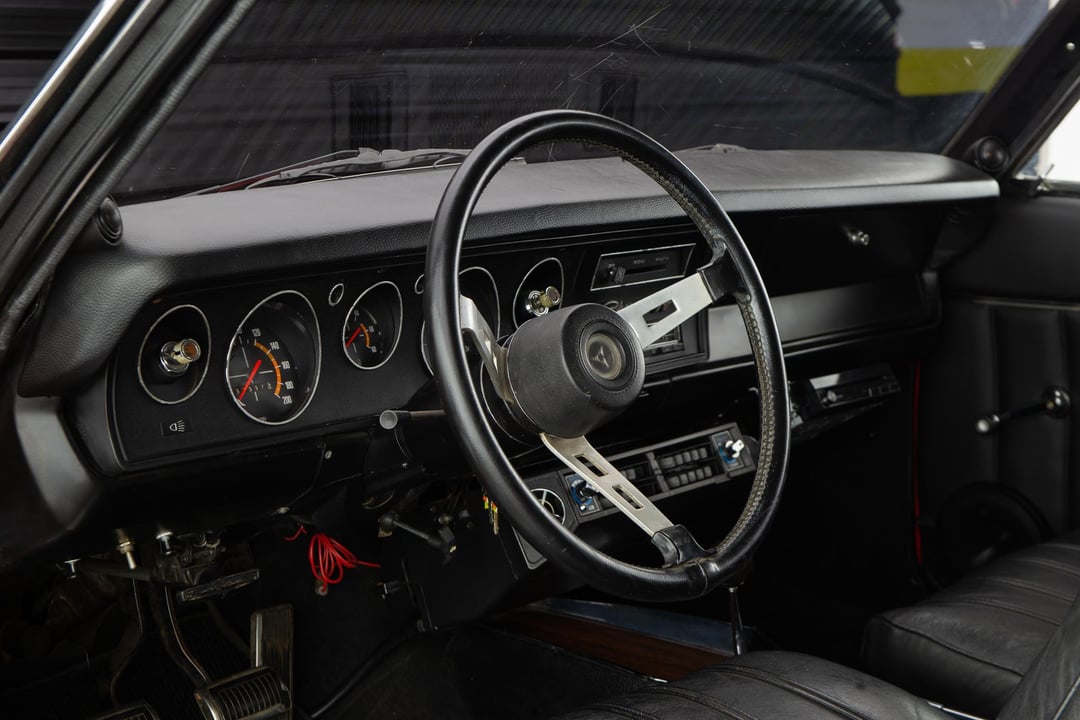
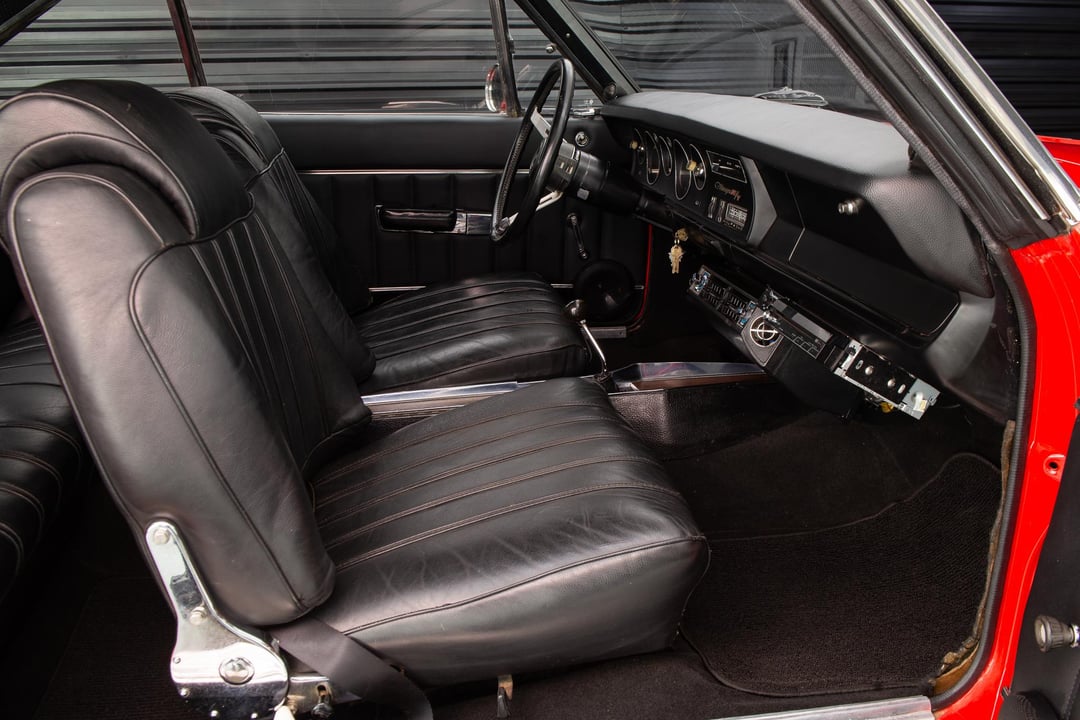
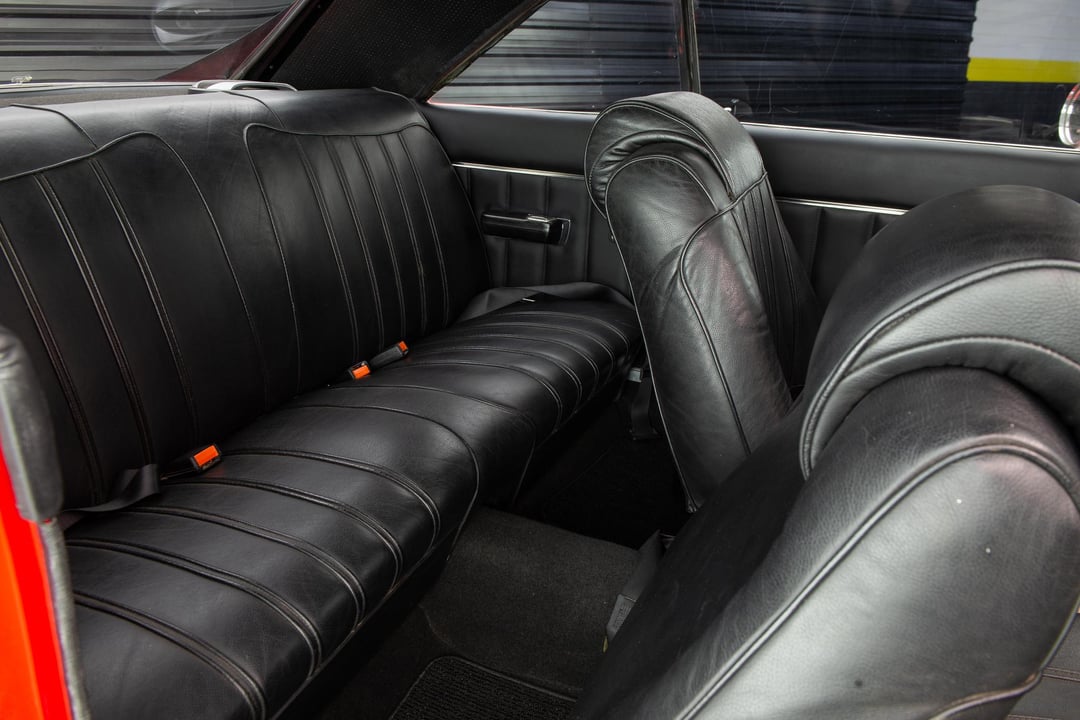
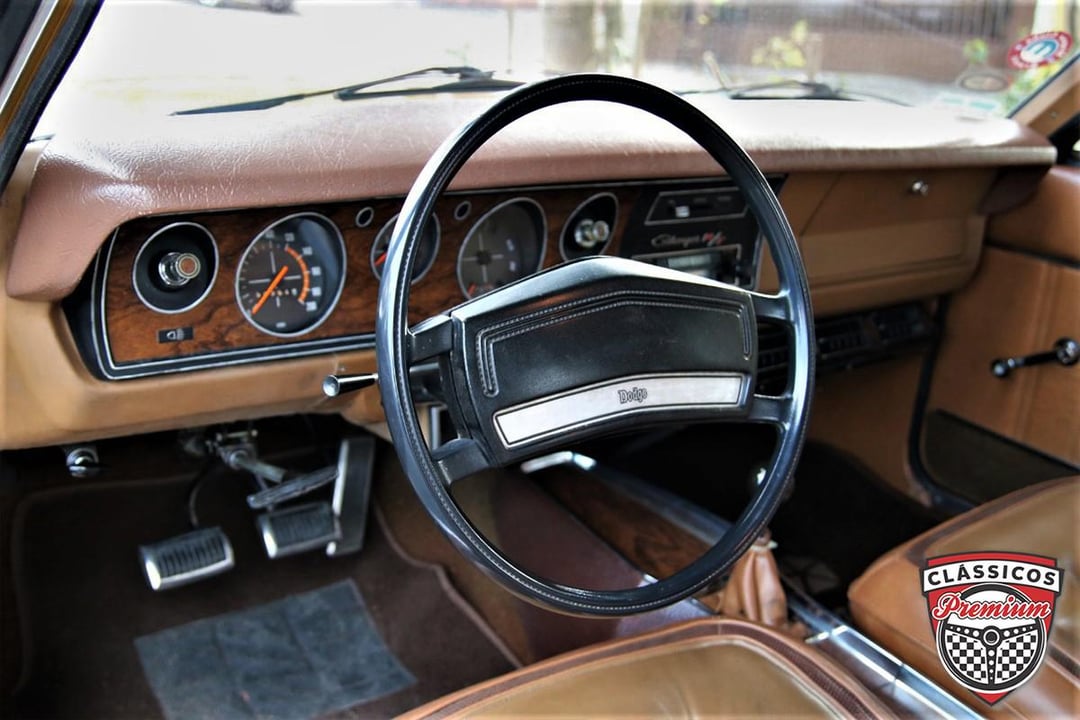
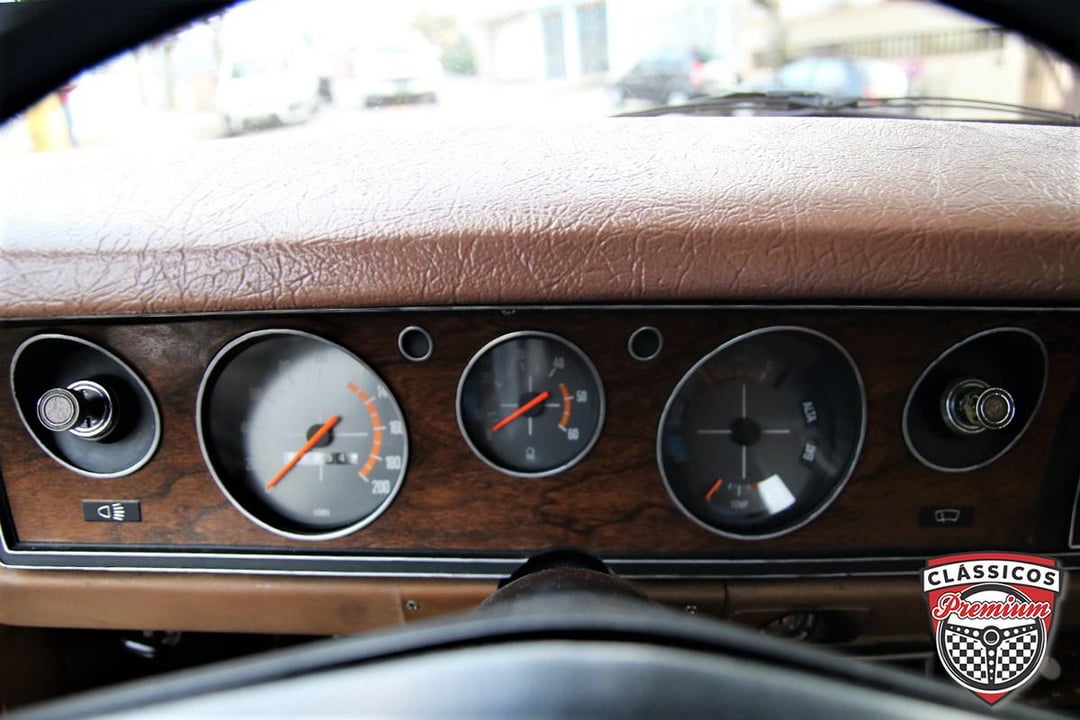
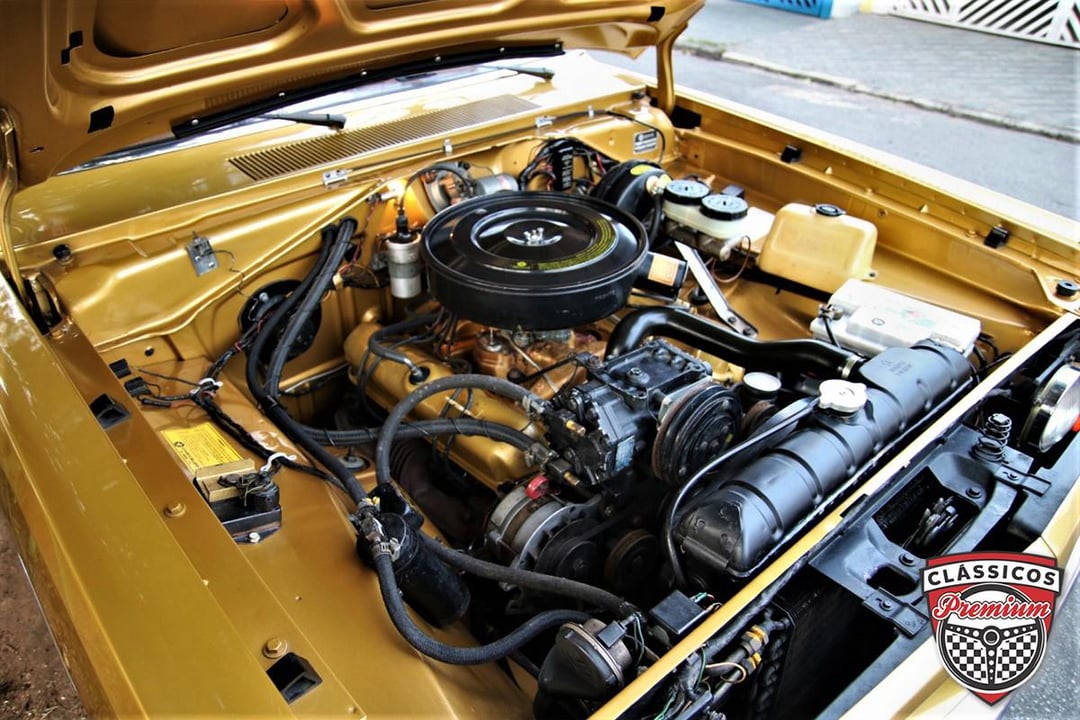
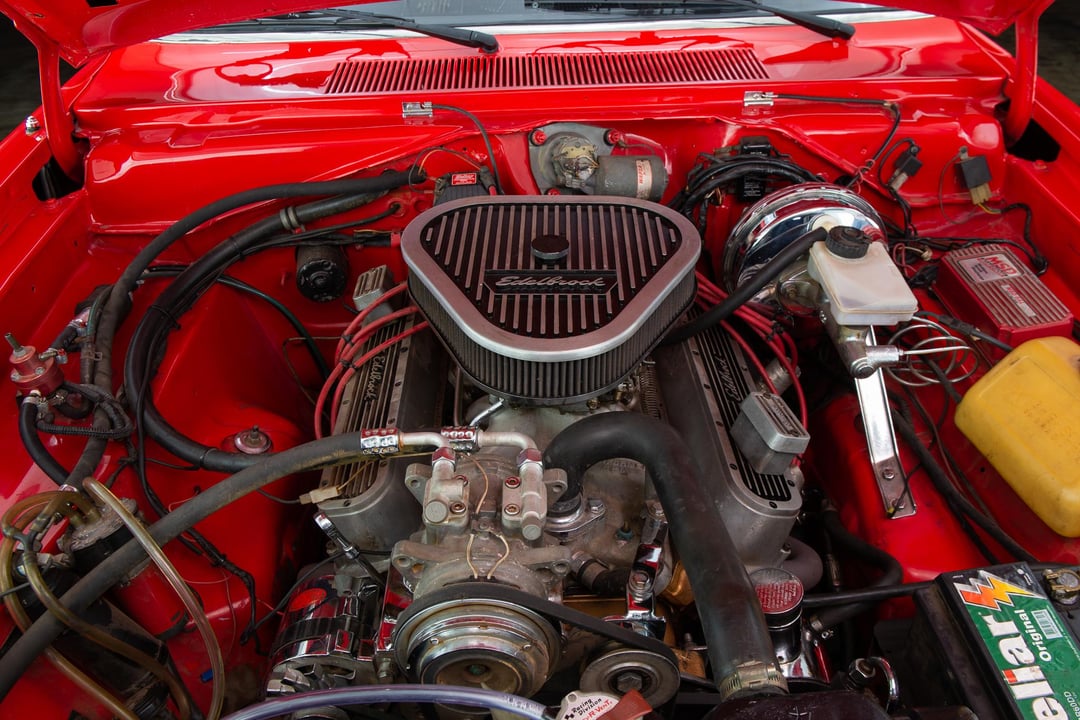
It was in 1969 that Chrysler, with its Dodge brand, began producing the Dart model in Brazil. In true American style, the “Dojões” (big dodges in rough translation), as they became known in the country, were equipped with a powerful 5.2-L V-8 engine that developed 198 hp at the time, around 135 hp in today’s net power standards.
The highlight of this enormous engine was not so much its maximum power, but rather its exuberant torque at low revs that moved the model’s approximately 1500 kg or 3307 lbs with ease and ease. In the simplest version, the Dart had four doors, a three-speed transmission on the column and a solid bench seat in the front.
The Dojões began to look beautiful and graceful in the two-door coupe version. The mechanics were identical for all, with independent front suspension with overlapping wishbones and a longitudinal torsion bar attached to the lower wishbone, and a rigid axle in the rear, with semi-elliptical leaf springs at each end.
Things started to get good when the Charger came out, with only a coupe body and sharing the same basic structure as the Dart, but with a new front end and finishing details. The engine, instead of the 190 hp of the standard versions, had 205 hp (140 hp, net power) thanks to an individual exhaust system for each bank of cylinders.
And the transmission was a four-speed manual with a lever on the floor (there was also a three-speed automatic that already had a torque converter lock in third gear). At the time, it was amazing that a car could surpass the 200 hp barrier (the Volkswagen Passat TS had 96 hp, with the same gross power base).
But the market was really amazed when the brand announced the sports version of the Charger, called the R/T. At the time, the manufacturer stated that this sports version was being launched to dominate the roads and the race tracks.
Here in Brazil, these R/Ts rarely participated in competitions and were not the king of the roads, but the R/T was always a very pleasant car to drive.
What was notable about the R/T was its powerful V-8 engine, with the same 5.2 liters, which produced a healthy 215 hp (around 145 hp by today’s standards). In addition, the Charger’s dual exhaust and its compression ratio increased from 7.5:1 to 8.4:1 also made a difference. This gave the engine even more torque and power and, at the time, required the use of blue gasoline, the premium gasoline of those times that had the same 95 RON octane as today’s regular gasoline, but with a low ethanol content, between 5% and 8%.
Of course, this extra cost per liter of gasoline, around 20%, did not worry the owner of the Charger R/T, since at the time it was one of the most expensive cars on our market. Leather-upholstered seats, air conditioning and hydraulic power steering were standard equipment on this incredible Dodge. And it also had electronic ignition, a breakthrough for the time, introduced in Brazil on the Simca Tufão in 1966.
One of its most peculiar features was the gear shift indicator light on the left front fender, information present on several models in the following years and in the current ones, and which had the (almost impossible) mission of making the big guy more economical.
This was a golden age for the Brazilian automobile industry. Dodge Charger R/Ts from this period, with black plates and in perfect condition, are sold on the market for figures that exceed R$300 thousand. A car for few to this day.
by OriginalPapaya8





![Saw my first [Porsche 911 S/T] last night. Unfortunately left my SD card at home so phone pics are all I got Saw my first [Porsche 911 S/T] last night. Unfortunately left my SD card at home so phone pics are all I got](https://www.evshift.com/wp-content/uploads/2024/10/ithhac8rqesd1-770x515.jpg)

1 Comment
Tou achando ótimo que tem um brasileiro no Reddit montando todos esses posts de carros nacionais. Mandando bem!!